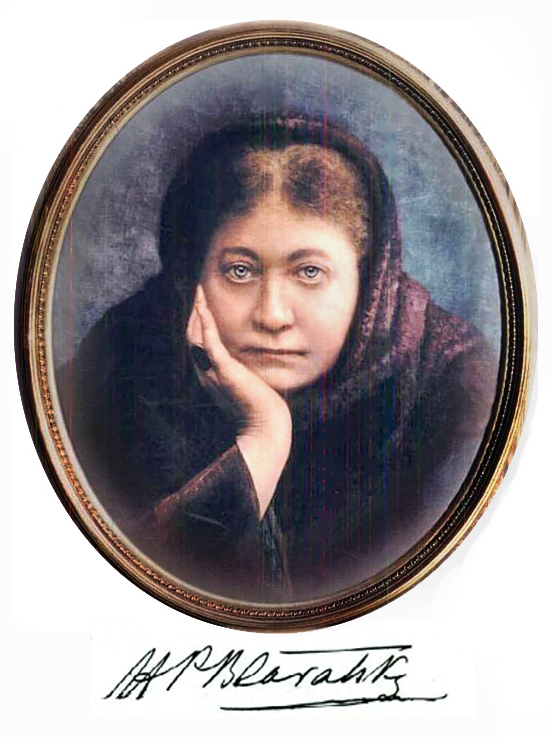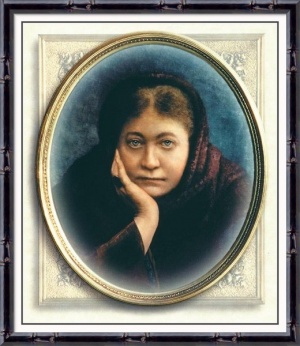The Life and Work of Helena Blavatsky represents a fascinating exploration of one of the most influential figures in modern esoteric thought. Born in 1831 in Russia, Blavatsky emerged as a pioneer of the Theosophical Society, blending Eastern philosophies with Western occultism to challenge conventional beliefs. Her writings and teachings, which include seminal works like “Isis Unveiled” and “The Secret Doctrine,” have left an indelible mark on spiritualism, influencing countless thinkers and movements. This article delves into her biography, contributions, and enduring legacy, offering a comprehensive look at how she shaped the landscape of alternative spirituality.
Early Life and Background

Helena Blavatsky’s early years were marked by a blend of aristocratic privilege and profound personal turmoil, setting the stage for her later pursuits in mysticism and the occult. Born into a noble Russian family, her childhood was filled with stories of adventure and the supernatural, which ignited her lifelong quest for hidden knowledge. This period not only shaped her worldview but also exposed her to the cultural and intellectual ferment of 19th-century Europe, where spiritualism was gaining traction amid scientific advancements. Understanding these formative experiences provides crucial insight into how Blavatsky developed her unique synthesis of Eastern and Western esoteric traditions.
Birth and Childhood

Helena Petrovna Blavatsky, née Hahn, entered the world on July 31, 1831, in Yekaterinoslav, Russia (now Dnipro, Ukraine), into a family of German-Russian descent. Her father, Colonel Peter Hahn, was a military man with a penchant for storytelling, while her mother, Helena von Hahn, was a successful author known for her romantic novels under the pseudonym “Zika Mondschein.” This literary influence exposed young Helena to a world of imagination and rebellion against societal norms from an early age.
Growing up in a tumultuous household, Blavatsky was surrounded by tales of the supernatural. Her grandmother, Princess Helena Dolgorukov, claimed descent from Rurik, the legendary founder of Russia, and regaled her with stories of ancient mysteries and psychic phenomena. This environment fostered in Blavatsky a deep-seated curiosity about the unseen forces governing the universe. By the age of ten, she reportedly experienced vivid visions and claimed to communicate with invisible entities, which she later described as her first encounters with the “astral plane.”
These early experiences were not without hardship. Blavatsky’s mother died when she was just eleven, leaving her to navigate a world of grief and instability. This loss propelled her into a rebellious adolescence, where she rejected conventional education and sought solace in books on mysticism, including works by Emanuel Swedenborg and the Kabbalah. Her childhood thus became a crucible for her emerging identity as a seeker of truth, blending personal loss with a hunger for the esoteric.
Travels and Early Experiences

In her teens, Blavatsky’s life took a nomadic turn, characterized by extensive travels that exposed her to diverse cultures and spiritual traditions. At seventeen, she married Nikifor Blavatsky, a much older man and vice-governor of Erivan, in an arranged marriage that quickly soured. Seeking escape, she fled to Constantinople and embarked on a series of adventures across Europe, the Middle East, and Asia.
During these wanderings, Blavatsky claimed to have encountered a range of mystical figures and experiences that shaped her worldview. In Egypt, she allegedly studied with Coptic magicians and delved into ancient rituals, while in Tibet, she purportedly met with secret masters known as the Mahatmas, who would later feature prominently in her teachings. These travels were not merely physical journeys but spiritual quests, where she absorbed influences from Buddhism, Hinduism, and Sufism.
However, her accounts of these experiences have been met with skepticism. Historians note that much of her narrative may have been embellished or fabricated to enhance her mystique. Nonetheless, these adventures provided the raw material for her later writings, where she synthesized global spiritual ideas into a cohesive philosophy. By her mid-twenties, Blavatsky had returned to Russia, but her restlessness persisted, leading her to explore spiritualism in the West and setting the foundation for her role as a bridge between Eastern and Western esotericism.
Initial Encounters with the Occult
Blavatsky’s formal entry into the occult world began in the 1850s, when she became involved in the burgeoning spiritualist movement in the United States and Europe. Spiritualism, which emphasized communication with the dead through mediums, resonated with her earlier visions and provided a platform for her psychic abilities. She quickly gained notoriety for her séances and claimed manifestations, such as materializing objects and levitating tables, which attracted both admirers and critics.
One pivotal moment came in 1873 when she settled in New York City, where she connected with other spiritualists and began articulating her unique blend of theosophy. Her encounters with figures like Henry Steel Olcott, a lawyer and spiritualist, marked the beginning of her collaborative efforts to formalize her ideas. Blavatsky’s occult experiences were not just personal indulgences; they were part of a broader intellectual rebellion against materialism and positivism, advocating for a return to metaphysical inquiry.
This phase of her life highlighted the tensions between authenticity and showmanship in her work. While some witnessed genuine phenomena, others accused her of fraud, a controversy that would follow her throughout her career. These initial forays into the occult thus served as a testing ground for her evolving philosophy, where she began to integrate scientific inquiry with spiritual revelation, laying the groundwork for the Theosophical Society.
Theosophical Society and Major Activities

The establishment of the Theosophical Society in 1875 marked a turning point in Helena Blavatsky’s life, transforming her personal quest into a global movement that sought to unify humanity through esoteric wisdom. This period was characterized by intense activity, including lectures, writings, and travels that spread her message across continents. The society’s three core objectives—promoting universal brotherhood, studying comparative religion, and investigating unexplained laws of nature and psychism—reflected Blavatsky’s vision of a synthesis between science and spirituality. Her efforts during this time not only built a lasting organization but also sparked debates that continue to influence alternative spiritual communities.
Founding the Society
The Theosophical Society was formally founded on November 17, 1875, in New York City, with Blavatsky and Henry Steel Olcott as key figures. This event was the culmination of Blavatsky’s growing disillusionment with the superficiality of American spiritualism and her desire to create a more profound, philosophically grounded movement. Drawing from her travels and studies, she outlined a framework that combined elements of Buddhism, Hinduism, and Western esotericism, emphasizing the existenceof a universal truth that transcended cultural boundaries.
A Vision for Unity
Blavatsky’s vision for the Theosophical Society was rooted in the belief that all religions stem from a common source, which she termed the “Wisdom Religion.” This concept posited that true spiritual knowledge was not confined to any one faith but could be found at the heart of all religious traditions.
To communicate this ideal, she crafted teachings designed to resonate with both Eastern and Western sensibilities. By positioning the society as an arena for dialogue among different spiritual paths, she aimed to foster understanding and cooperation. The founding principles emphasized universal brotherhood, encouraging members to look beyond societal divisions such as race, nationality, or creed. Blavatsky believed that only through unity could humanity unlock its full potential and address the pressing challenges of the time, including materialism and conflict.
The inception of the Theosophical Society ignited a passionate following. Members gathered to explore esoteric subjects, engage in discussions about spirituality, and participate in experiments related to psychism. As interest grew, so did the organization’s global reach, encompassing branches across Europe, Asia, and eventually the Americas. This burgeoning community became a melting pot of ideas, where diverse perspectives converged, nurturing a depth of thought and practice that shaped the modern spiritual landscape.
Writings and Teachings
As Blavatsky engaged with her followers, her writings emerged as foundational texts for the Theosophical movement. Her most renowned works include Isis Unveiled (1877) and The Secret Doctrine (1888), where she explored the interplay between science, religion, and philosophy.
Isis Unveiled
In Isis Unveiled, Blavatsky delves into the inadequacies of contemporary science and religion, arguing that neither could adequately explain the mysteries of existence. She critiqued the dogmas of organized religion while simultaneously defending the value of intuition and inner knowledge.
This work is characterized by its ambitious scope, combining historical analysis with metaphysical inquiry. Through extensive research, Blavatsky sought to reveal hidden truths buried within religious texts, folklore, and ancient wisdom traditions. Her synthesis of various esoteric viewpoints positioned her as both a scholar and a mystic, capable of bridging intellectual discourse with spiritual insight.
The Secret Doctrine
In The Secret Doctrine, Blavatsky presented her most comprehensive exposition of theosophical teachings. The text is divided into two volumes: the first focuses on cosmogenesis, exploring the origins of the universe, while the second emphasizes anthropogenesis, detailing the evolution of humanity.
Through complex metaphors and allegorical language, Blavatsky articulated her views on the cyclical nature of existence, karma, and reincarnation. She introduced concepts such as the “root races,” suggesting that humanity evolves through different stages of spiritual development, each marked by specific characteristics. This notion challenged prevailing perceptions of linear progression, inviting readers to contemplate the profound intricacies of life’s journey.
Her writings, often dense and layered with meaning, prompted debates and discussions that extended far beyond the Theosophical Society. Scholars, critics, and enthusiasts alike engaged with her ideas, leading to new interpretations and applications of her teachings in diverse spiritual contexts.
Global Expansion
The Theosophical Society’s success can also be attributed to its ability to adapt and resonate with various cultures worldwide. Following its establishment in the United States, the society expanded rapidly, establishing branches in countries such as India, England, and France.
Influence in India
Blavatsky’s move to India in 1879 marked a significant chapter in the society’s evolution. Here, she connected with notable figures in Indian spiritual thought, further enriching her understanding of Eastern philosophies and practices. This period saw the society actively engaging with Indian intellectuals, fostering intercultural respect and collaboration.
Blavatsky’s emphasis on the universality of spiritual truths resonated deeply within the Indian context, where many sought to reconcile Western ideals with traditional beliefs. Her advocacy for the revival of ancient Indian wisdom illuminated paths toward national identity and self-awareness during a time of colonial oppression.
Legacy in the West
As the Theosophical Society flourished, it also influenced the Western esoteric tradition. Many prominent thinkers, including philosophers, writers, and artists, drew inspiration from Blavatsky’s teachings. Figures like Aldous Huxley and Carl Jung acknowledged the impact of theosophical principles on their own work, particularly in relation to consciousness and spirituality.
The integration of Eastern and Western thought spurred the emergence of New Age movements in the twentieth century, popularizing concepts such as reincarnation, karma, and meditation. Blavatsky’s legacy thus extended beyond her lifetime, creating a tapestry of ideas that would evolve and adapt in response to societal shifts and challenges.
Conclusion

Helena Petrovna Blavatsky’s life and work represent a fascinating intersection of spirituality, philosophy, and cultural exchange. Her journey from a tumultuous childhood to becoming a pivotal figure in the establishment of the Theosophical Society illustrates the profound impact of personal experiences on public thought. Through her writings, teachings, and commitment to unity, Blavatsky has left an indelible mark on the landscape of spiritual exploration.
By synthesizing diverse religious traditions and addressing the complexities of human existence, she offered a vision of enlightenment that continues to inspire seekers today. Whether viewed as a controversial figure or a revered teacher, her contributions have sparked dialogues that transcend centuries, inviting us to explore the depths of truth in our own lives. As we confront contemporary challenges, Blavatsky’s call for universal brotherhood and a deeper understanding of our interconnectedness remains more relevant than ever.

GIPHY App Key not set. Please check settings